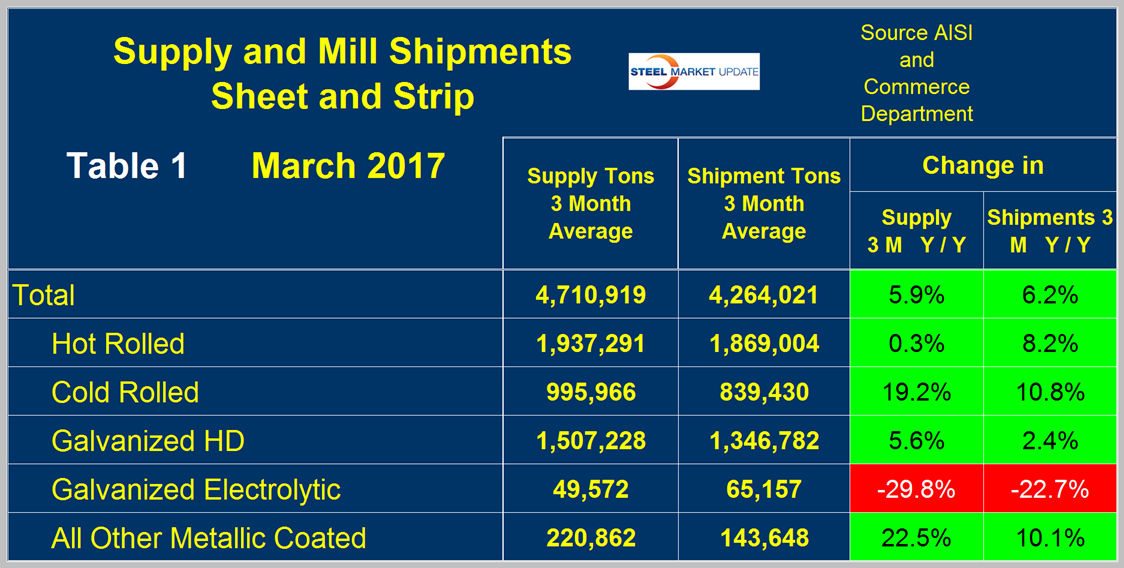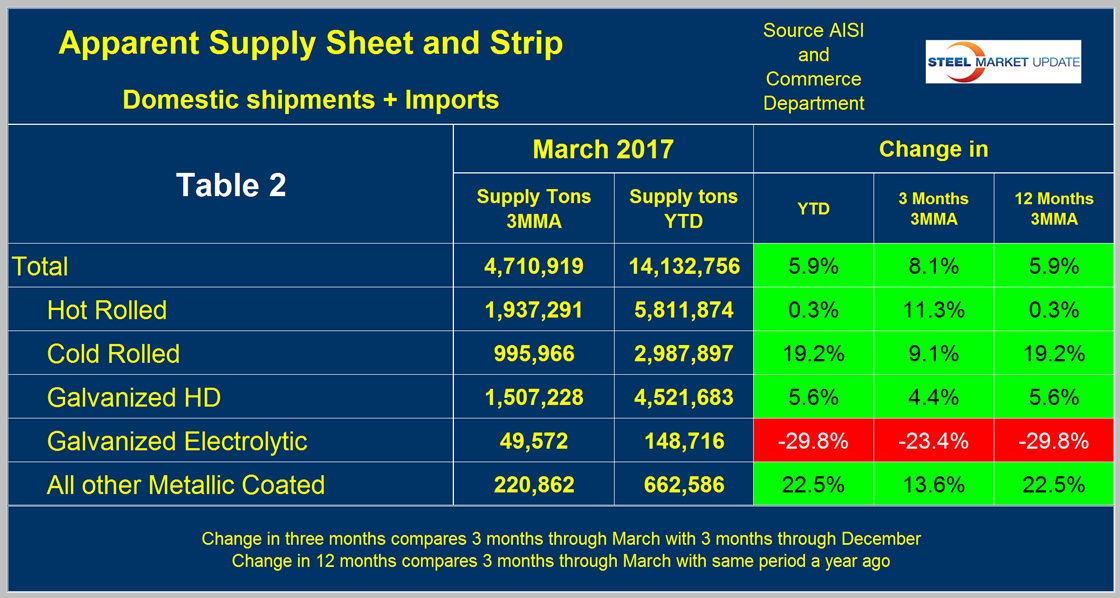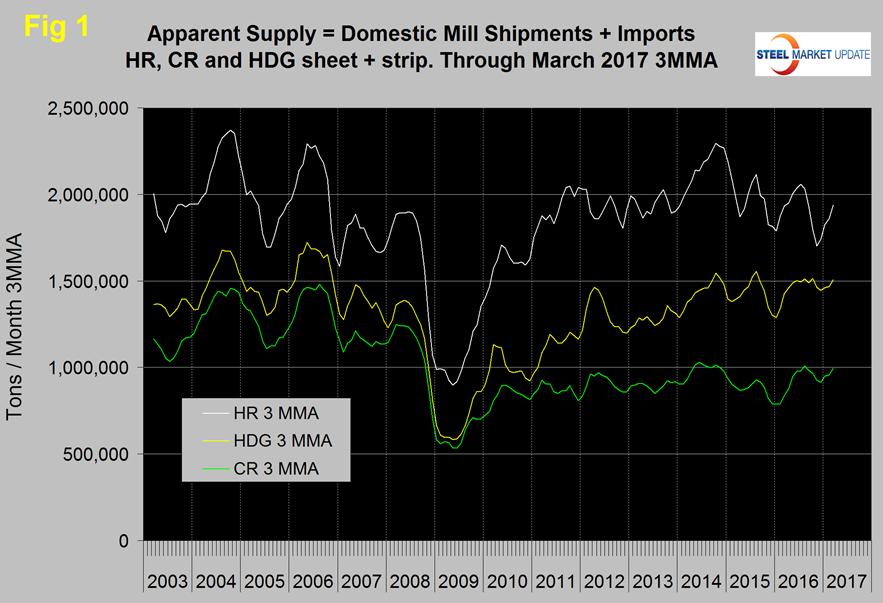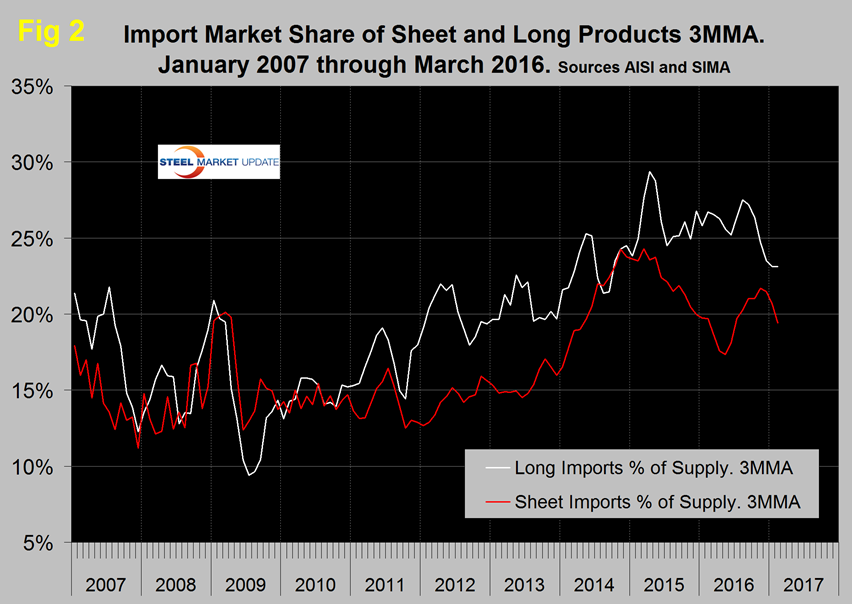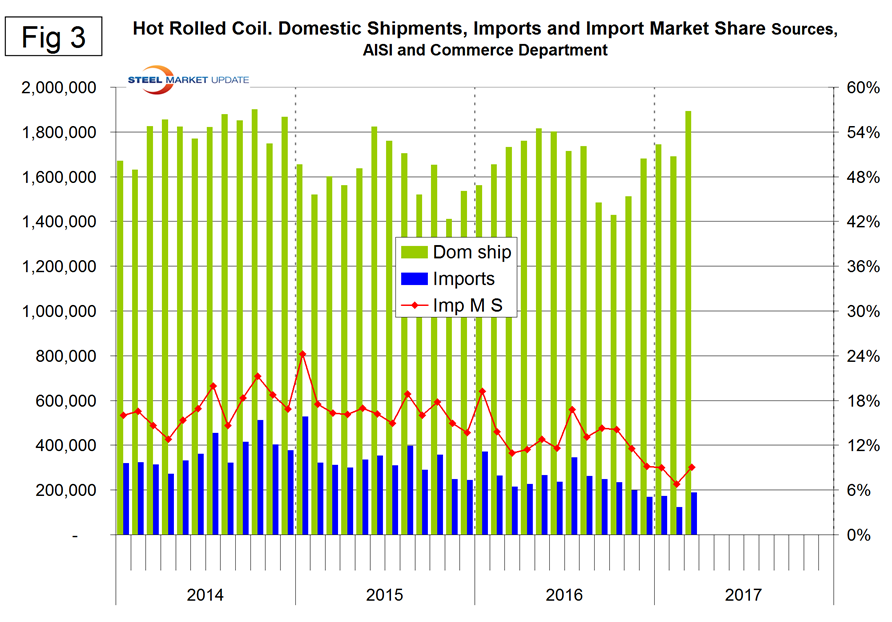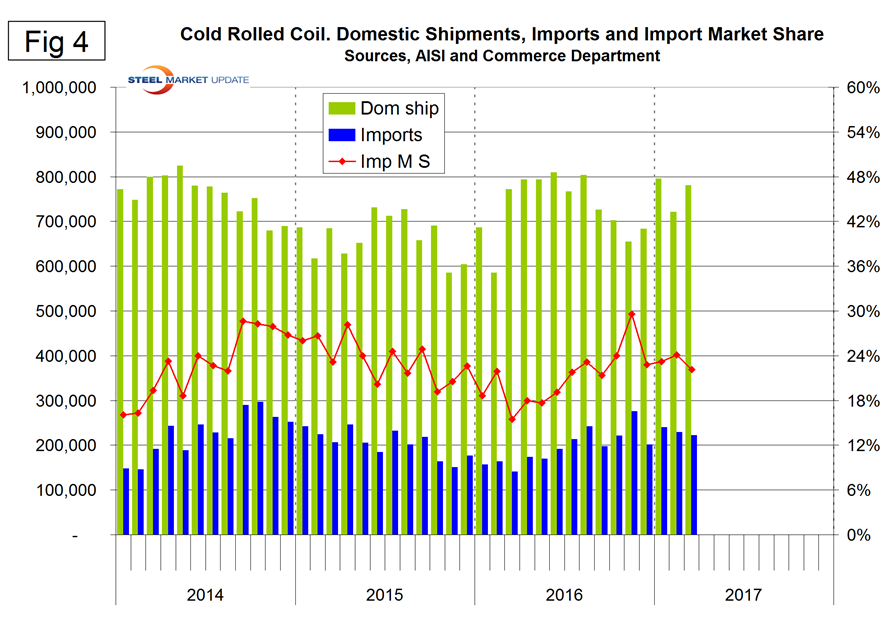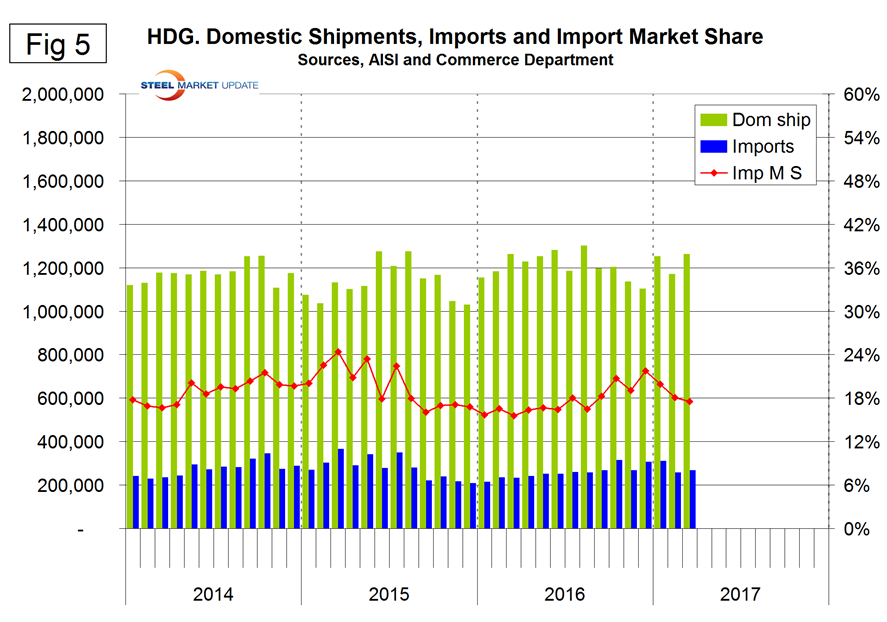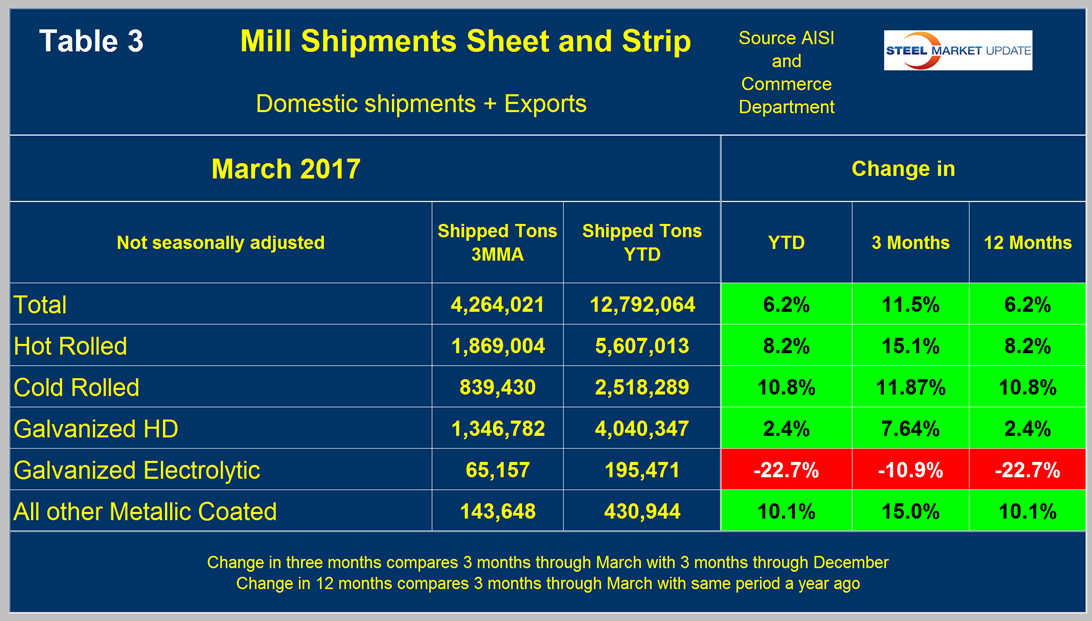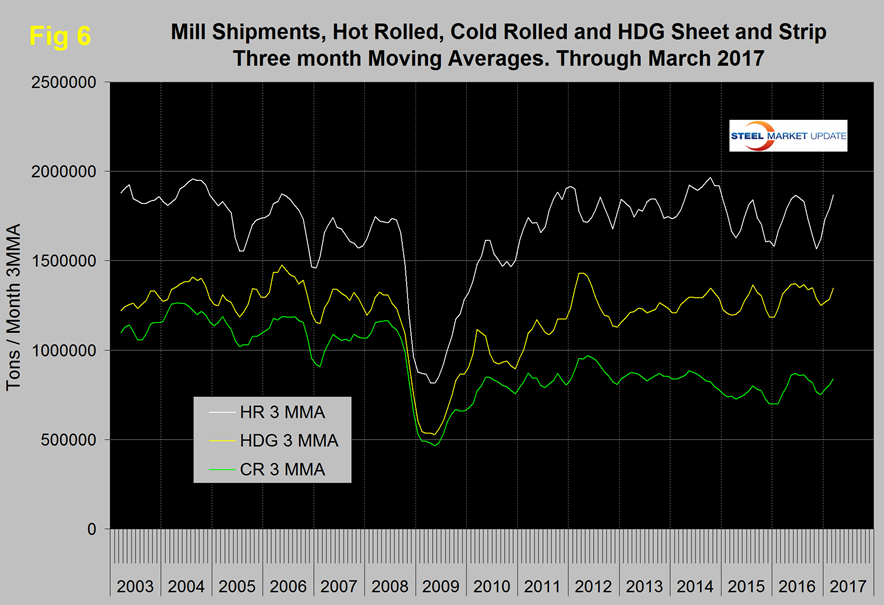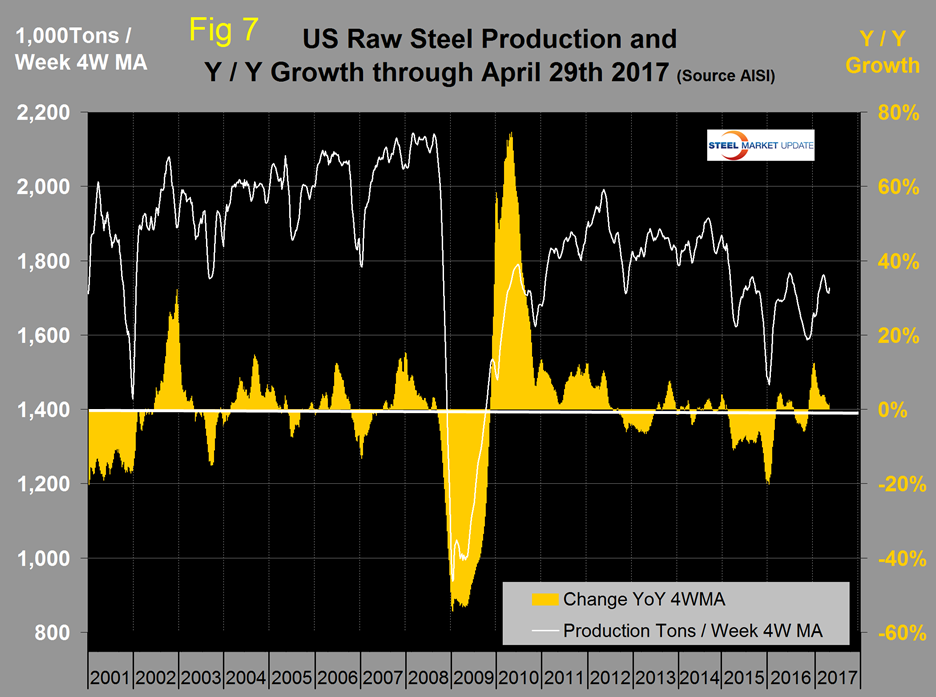Economy

Shipments and Supply of Sheet Products through March 2017
Written by Peter Wright
May 10, 2017
This report summarizes total steel supply from 2003 through March 2017 and year on year changes. It then compares domestic mill shipments with total supply to the market. It quantifies market direction by product and enables a side by side comparison of the degree to which imports have absorbed demand. Sources are the American Iron and Steel Institute and the Department of Commerce with analysis by SMU.
Table 1 describes both apparent supply and mill shipments of sheet products (shipments includes exports) side by side as a three month average through March, for both 2016 and 2017.
Apparent supply is a proxy for market demand. Comparing these two time periods total supply to the market was up by 5.9 percent and shipments were up by 6.2 percent. The fact that the increase in shipments was more than the increase in supply means that imports were less of a factor in the market compared to the same three months last year. This was not the case with individual products. Table 1 breaks down the total into product detail and it can be seen that supply grew by more than shipments for every product except hot rolled. Electro-galvanized is an odd ball because it has net exports.
A review of supply and shipments separately for individual sheet products is given below.
Apparent Supply
Apparent Supply is defined as domestic mill shipments to domestic locations plus imports. In the three months through March 2017 the average monthly supply of sheet and strip was 4.711 million tons, up by 5.9 percent compared to the same period ending March 2016 (year/year). In the three months through March compared to the 3 months through December, supply was up by 8.1 percent. The short-term increase (3 months) compared to the long-term improvement (12 months) means that through March momentum was positive. There is no seasonal manipulation of any of these numbers but by definition, y/y comparisons have seasonality removed but 3m/3m comparisons do not. Table 2 shows the change in supply by product on this basis through March. Momentum was negative for all products except hot rolled coil.
Figure 1 shows the long-term supply picture for the three major sheet and strip products, HR, CR and HDG since January 2003 as three month moving averages. All three products had an uptick in supply this year on a 3MMA basis.
Figure 2 shows import market share of sheet products and includes long products for comparison.
Based on a 3MMA, the import market share of sheet products declined from 21.7 percent in November to 18.6 percent in March which was the lowest share since June last year. Long product import market share is now below its trend since 2010 and in 3 months through March was 25.8 percent. Figures 3, 4 and 5 show mill shipments to domestic locations, imports and import market share for HRC, CRC and HDG. Import market share for the three products in March was 9.0 percent, 22.1 percent and 17.5 percent respectively.
Mill Shipments
Table 3 shows that total shipments of sheet and strip products including hot rolled, cold rolled and all coated products were up by 6.2 percent in 3 months through March year over year and up by 11.5 percent comparing three months through March with three months through December.
These March/December numbers have a seasonal content but discounting that we think that momentum is positive which was also true of all individual products. Figure 6 puts the shipment results for the three main products into the long-term context since January 2003.
SMU Comment: A problem with this data is that it’s now well into May and the latest information that we have for shipments and supply is for March. The AISI puts out weekly data for crude steel production the latest for which was w/e April 29th. This provides the most current data for steel mill activity. Figure 7 shows the y/y change in weekly crude output on a four week moving average basis.
Growth became positive year/year in w/e November 19th last year and has been positive for the last 22 weeks. Based on the strength of the economic indicators analysis that SMU performs and our proprietary measure of buyer sentiment, we are expecting demand for sheet products to continue to increase through the third quarter.

Peter Wright
Read more from Peter WrightLatest in Economy

Steel groups welcome passage of budget bill
Steel trade groups praised the passage of the Big Beautiful Bill (BBB) in Congress on Thursday.

Industry groups praise Senate for passing tax and budget bill
The Steel Manufacturers Association and the American Iron and Steel Institute applauded the tax provisions included in the Senate's tax and budget reconciliation bill.

Chicago PMI dips 0.1 points in June
The Chicago Purchasing Managers Index (PMI) slipped 0.1 points to 40.4 points, in June.

Multi-family pullback drives housing starts to 5-year low in May
US housing starts tumbled in May to a five-year low, according to figures recently released by the US Census Bureau.

Architecture firms still struggling, ABI data shows
Architecture firms reported a modest improvement in billings through May, yet business conditions remained soft, according to the latest Architecture Billings Index (ABI) release from the American Institute of Architects (AIA) and Deltek.

